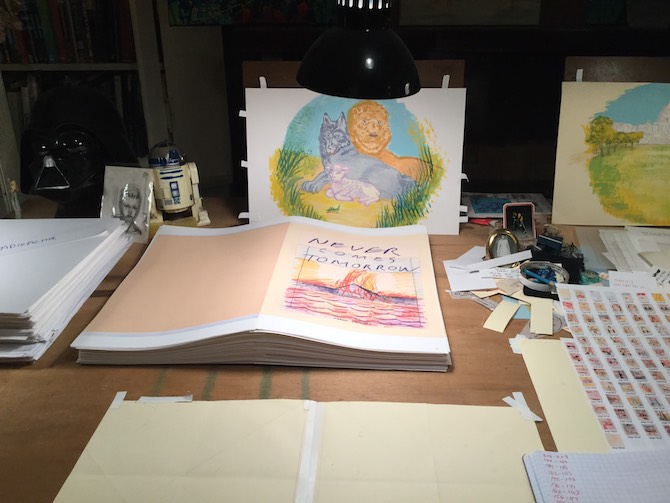Muestra Mostra, Ivan Kreilkamp, Stina Sandström, Frank Santoro
——————————————
Los cómics y las noticias que me han llamado la atención esta semana:
~ en Español y “sometimes in English” ~
——————————————
Larga vida a los fanzines: impresiones alternativas
Muestra Mostra, llevada a cabo en Córdoba (Argentina) réune las obras de muchas en el mundo del fanzinismo feminista.
Javier Mattio: Expresión material, múltiple y subterránea del hazlo-tú-mismo, el fanzine (literalmente, “revista de aficionado”) vive hoy un auge que es también una expansión de su usual destino de fotocopia alternativa: el fanzine llega a librerías y museos, se celebran festivales, ferias, talleres y charlas en su nombre, se los archiva en “fanzinotecas”, se convierten en preciados y requeridos objetos artísticos.
El fenómeno se concreta en Córdoba en exponentes como la actual “Muestra Mostra” del Museo Genaro Pérez, el Festival Ctrl P y la feria La Batalla en Casa Trece (donde también opera la fanzinoteca más grande del país) o las historietas-zines que publica el sello Buen Gusto Ediciones.
——————————————
Ivan Kreilkamp: No fan of the genre can complain about such a turn of events—and yet, surely something is also always lost in this kind of upward-mobility success story. Alison Bechdel observed a few years ago that “one of the reasons I became a cartoonist was so that I could write and draw free from the kind of critical scrutiny that I was sure would wither me if I dared to enter the lists of the fine art or literary writing worlds. Comics was a dark, disreputable place … You could do what you wanted here.”
——————————————
The Carnival Grotesque: Representations of femininity in Swedish feminist comics
Stina Sandström: This dissertation explores the mainstream success of a new wave of Swedish female cartoonists borne out of the feminist zine community between 2004 and 2016. These cartoonists have contributed to a change in perception in Sweden about comics as a medium and their potential to introduce current feminist discourse into mainstream media and reach a wider public. The study identifies a commonality in these comics of the parodic and liberating humour of the carnivalesque; a literary tendency proposed by Russian literary critic Mikhail Bakthin which expresses frustration and discontent with the structure of society through a certain ritualistic humour which in the context of these comics expose dominant gender structures and offer new ways of performing femininity. Despite working independently for the most part, the power of their work lies in the way they expand on (even imitate) each other, often picking up on a specific subject or area of critique where another left off, with the effect of combining their individual voices into one great voice.
The phenomena is investigated through a series of questions: What Swedish political and cultural preconditions allowed for these usually marginalised feminist zine makers to become part of popular culture? How do they communicate feminism in ways that appeal to a mainstream audience? How, if at all, does their work influence or improve women’s lives in Sweden?
——————————————
Which instruments and tools do you use to draw?
I do not use a computer. I do not know how to use Photoshop. Why teach the machine how to do my job? Everything is analog. I draw on conventional office paper and use conventional office supplies essentially. Pentel rolling writers which were the first rollerball pen. Alex Toth told me to use that pen. And I use color pencils and markers. Mostly Berol Prismacolor brand. As Art Spigelman says “it is more like writing” in that sense if one uses “dry” media. One of my jobs as a young man was to be an assistant to oil painters and I enjoy not having to have a separate studio in which to make art. Cartoonists are lucky that we can be relatively clean in that way. I do use the airbrush. That’s fun. But it is water based. I use the airbrush mostly for background paintings that I am hired to do by Dash Shaw. But I also did a Silver Surfer story for Marvel with the airbrush. The airbrush is fun because it is like drawing with colored air. And it is water based paint.
——————————————
Suzy and Cecil – 4-25-2018 – Gabriella Tito
Joanie and Jordie – 4-25-2018 – by Caleb Orecchio




